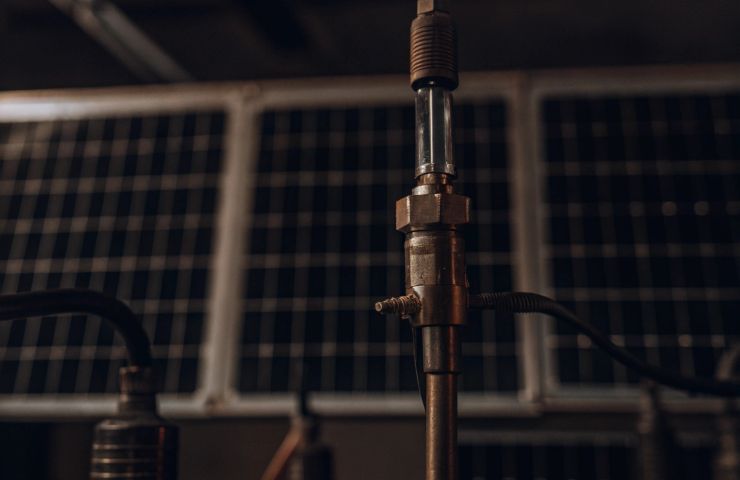
Electrolysis Advances Enable Stable Green H₂O₂ Production under Intermittent Renewables
August 19, 2025On July 30, 2025, a crack team of researchers dropped a game-changing report in Angewandte Chemie about a fresh electrosynthesis trick for whipping up hydrogen peroxide (H₂O₂) on demand. They’re using these nifty O-coordinated cobalt single-atom catalysts tucked into a self-healing gas diffusion electrode and, get this, they’re hitting over 96% Faradaic efficiency at –50 mA/cm². It even laughs in the face of 55 rapid start-stop cycles under simulated solar swings. Bottom line: it looks like a real contender for scalable, zero-emission technology in chemical manufacturing.
Market Impact
Right now, the global H₂O₂ scene is a $3.5 billion affair, largely run by the energy-guzzling anthraquinone process—hello, big CO₂ footprint. Switching gears to on-site, electrified production could shake things up:
- Decentralization: Pop these compact units at bleach plants, water treatment sites, or even farms and slash logistics and storage bills by 20–30%.
- Carbon Reduction: Plug into the grid or pair with behind-the-meter renewables and you could chop production emissions by up to 70%, ticking off those net-zero targets.
- Operational Flexibility: Crank H₂O₂ output up or down to match solar or wind availability. Think of it as a fancy grid-balancing act—peak shaving, frequency regulation, you name it.
- Agriculture Synergies: Imagine on-farm H₂O₂ for disinfection, water treatment, even soil remediation. It’s a triple-duty tool for modern farming.
Crunching the numbers, an electrified route can save about 2.5 kg CO₂-equivalent per kilo of H₂O₂ compared to anthraquinone. At 2,000 tons per year, that’s 5,000 tons of CO₂ dodged—like pulling 1,000 cars off the road. With demand rising roughly 6% a year through 2030, if just 20% of production flips to electrochemical methods, we’re talking over 50 million tons of CO₂ saved. That’s a serious leap toward industrial decarbonization.
Early adopters could snag premium pricing, polish up their ESG profiles, and stay ahead of looming environmental rules—opening doors to new investment channels and green bonds.
Technical Snapshot
Here’s the nerdy stuff: the heart of the setup is a gas diffusion electrode decked out with atom-thin cobalt sites bound to oxygen ligands. Highlights:
- Exceptional Selectivity: Steers the two-electron oxygen reduction reaction (ORR) straight to H₂O₂, keeping Faradaic efficiency north of 96% even when solar power flickers.
- Durability Under Cycling: Powers through at least 55 on/off jolts with hardly any drop in performance—perfect for renewable-driven ops.
- Self-Healing Capability: A built-in stash of O-coordinated sites patches up wear and tear, so the catalyst stays active over time.
In-situ X-ray absorption spectroscopy shed light on the magic: those O-ligands lock the cobalt in place, stopping it from leaching away in acidic electrolytes. Meanwhile, the carbon matrix channels electrons and lets gases flow freely. It’s a neat one-two punch that tackles the classic stability-versus-activity dilemma in single-site catalysts.
Key Takeaways
- Moving from anthraquinone to electrolysis-based H₂O₂ production can flip a $3.5 billion market toward zero-emission technology.
- The system’s resilience under renewable energy intermittency is a breakthrough for modular, on-site setups in the sustainable energy ecosystem.
- Atomic-scale catalyst design delivers both laser-focused selectivity and marathon-grade durability.
- Deploying these units in ag and water treatment plays shows off serious cross-sector chops.
- Open-access protocols and data mean transparency—and faster, collaborative development.
Parallel Developments
Others have been chasing the single-atom ORR dream with Ni and Fe, hitting 80%+ Faradaic efficiencies in the lab but folding under real-world current swings. The cobalt approach keeps its cool above 96% even after heavy cycling, setting a new bar. Meanwhile, outfits like Evoqua and Solugen are rolling out H₂O₂ generators, but their reactors are a bit more complex. The cobalt method cuts through the hardware clutter and trims chemical use, keeping costs down.
Industry Response
You can practically hear the whispers: big chemical and water-treatment players are lining up pilots. Word is there are trial units headed for bleaching plants in Germany and wastewater sites in California. For licensors and EPC firms, that hints at a pipeline north of $200 million in mid-scale projects over the next five years.
Policy and Investment Implications
Policy’s on your side: US and EU schemes dish out 30–40% tax credits on clean-tech gear. A 1 MW H₂O₂ demo plant could snag $1.5–2 million under the US Inflation Reduction Act alone. Toss in voluntary carbon credits—at $20–$40 a ton—and you’re looking at a 3–5 point bump in IRR. Savvy backers and corporate offtakers eyeing green bonds or sustainability-linked loans should have this on their radar, as policy tailwinds turbocharge the economics of this electrified route.
Future Outlook
Scaling up means mastering reactor stacking, beefing up membrane lifespans, and driving down catalyst costs. Learning curves suggest 20–25% capital reductions every time capacity doubles, aiming for sub-$500 per kW systems within a few years. Real-world demos pairing solar farms with H₂O₂ electrolyzers will be the acid test—if they deliver on promised OPEX savings, we could see commercial rollouts by 2027, marking a major leap in the march toward industrial decarbonization and a cleaner supply chain.
Final Thoughts: With its top-tier efficiency, cycling resilience, and plug-and-play flexibility, this electrosynthesis platform is charting a clear path for clean oxidation chemistry and a greener chemical industry.
Source Wiley


 With over 15 years of reporting hydrogen news, we are your premier source for the latest updates and insights in hydrogen and renewable energy.
With over 15 years of reporting hydrogen news, we are your premier source for the latest updates and insights in hydrogen and renewable energy.